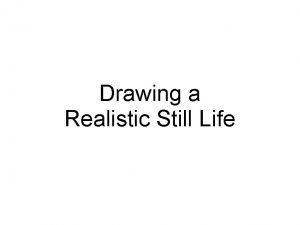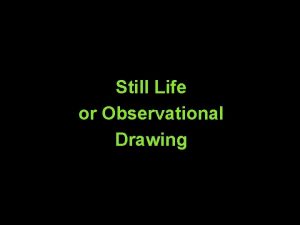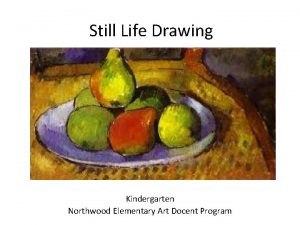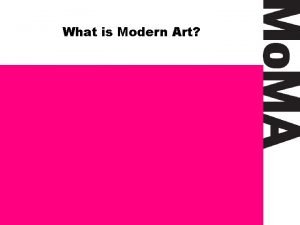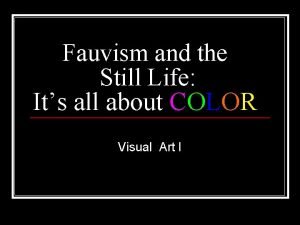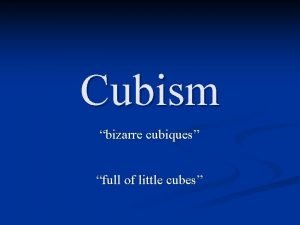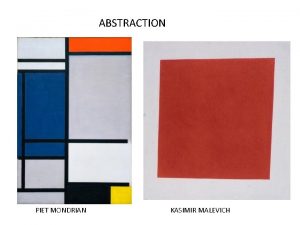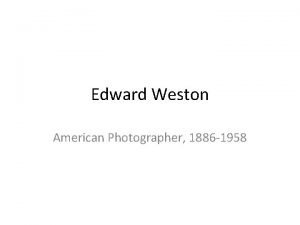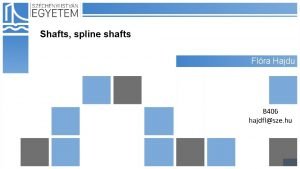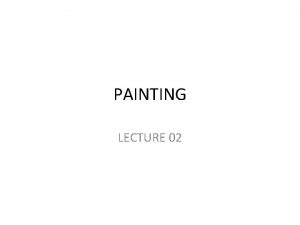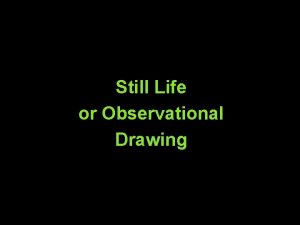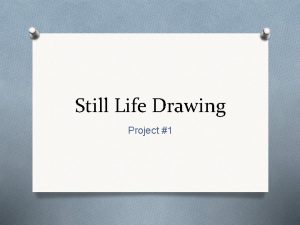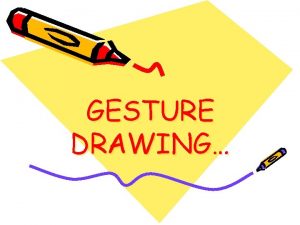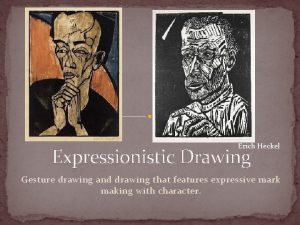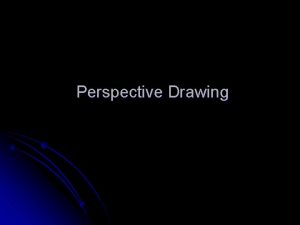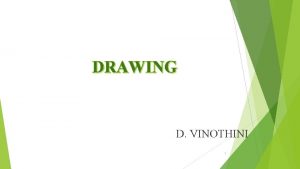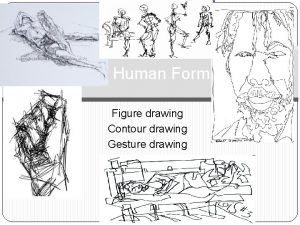Still Life Still Life a painting or drawing

























- Slides: 25

Still Life

Still Life • a painting or drawing of an arrangement of objects, typically including fruit and flowers and objects contrasting with these in texture, such as bowls and glassware

What We Will Be Doing • Create a still life with 5 complex objects around the classroom WITH PERMISSION. • 1 Glass • 1 Metal • 1 Wood • 1 Fabric • 1 Free Choice *Pro Tip- Take photo of arrangement so set up is easy the next day*

Why We Will Be Creating A “ Still Life” Drawing • Observational skills, to “see” like an artist • Shading skills • Proportion • 3 D Rendering with Tone

Using a View Finder


Use of View Finder • Observational skills, to “see” like an artist • Shading skills • Proportion • 3 D Rendering with Tone

What You Will Be Graded On • Observational skills, to “see” like an artist • Shading skill • Proportion • 3 D Rendering with Tone • Craftsmanship/ Time Management

Shading Practice

Day 1: Proportion. • Start with the large, simple shapes and “Block” them in. • Pay attention to Proportion (size relation) • Make sure drawing touches 3 edges of the paper

Day 1 Tips: • Draw COMPOSITION or LAYOUT as if you are “Zooming In” in order to fill page (off 3 edges) • Remember to draw what you SEE, not what you KNOW • Shapes: Ex. a Circle may look like an oval from a different angle • Proportion: A soda can is shorter than a bottle of water. BUT if the can is CLOSER to your view, it may appear BIGGER. • DON’T STACK TOO HIGH. You wont be able to go off 3 edges if the objects are stacked too tall.



Sighting Techniques Negative Space • Negative Space is the area AROUND an object. • Sometimes it helps to look at those shapes when “blocking in” your objects.

Sighting Techniques Thumbnail Measuring • Thumbnail measuring is using your thumbnail and pencil to check the proportions of different areas or objects within a still life. • Ex. See what should be EQUAL in size and adjust drawing accordingly. • Make sure your arm is locked into place. (if you move it, closer in or further out, it will measure size inaccurately)

Sighting Techniques Thumbnail Measuring • Thumbnail measuring is using your thumbnail and pencil to check the proportions of different areas or objects within a still life. • Ex. See what should be EQUAL in size and adjust drawing accordingly. • Make sure your arm is locked into place. (if you move it, closer in or further out, it will measure size inaccurately)

Day 2: Perspective • The art of drawing solid objects on a two-dimensional surface so as to give the right impression of their height, width, depth, and position in relation to each other when viewed from a particular point.

How To and Other Tips • Remember that some shapes change based on angle. • (Ex. A circle may only be a circle from the top view. It will flatten or stretch as the angle changes).

Day 3 -4: Shading • Shading- Pay attention to light source. • 2 H- Use for LIGHT shading • HB (#2 Pencil)- Use for MEDIUM shading • 4 B- Use for DARK shading • Start LIGHT, then LAYER. • You can always add more but can only take off so much.

Directional Mark-Making • As you continue shading, pay attention to the shape of the form (3 D Object) that you are drawing and use Directional Mark-Making – add shading or tiny lines to show bends and curves of objects

You Can Start with Contour Lines

Tortillions



Day 5: Double check
 Still life questions
Still life questions Maddie lambert
Maddie lambert Wayne thiebault
Wayne thiebault Contour line shoe drawing
Contour line shoe drawing 7 step value scale
7 step value scale Elementary still life drawing
Elementary still life drawing Continuous line drawing still life
Continuous line drawing still life Virtual instructor.com
Virtual instructor.com Cezanne still life
Cezanne still life Still life nature morte
Still life nature morte Still life with mandolin and guitar
Still life with mandolin and guitar Still life fauvism
Still life fauvism Picasso’s still life with chair caning
Picasso’s still life with chair caning Picasso’s still life with chair caning
Picasso’s still life with chair caning Kazimir malevich
Kazimir malevich Simple pumpkin still life
Simple pumpkin still life Mixed media still life
Mixed media still life Still life research
Still life research Still life with compotier art movement
Still life with compotier art movement Still life photography
Still life photography Still life plural
Still life plural Kategori foto jurnalistik
Kategori foto jurnalistik Engineering
Engineering Typical drawing scales
Typical drawing scales Shaft design
Shaft design Isometric view and isometric projection
Isometric view and isometric projection

